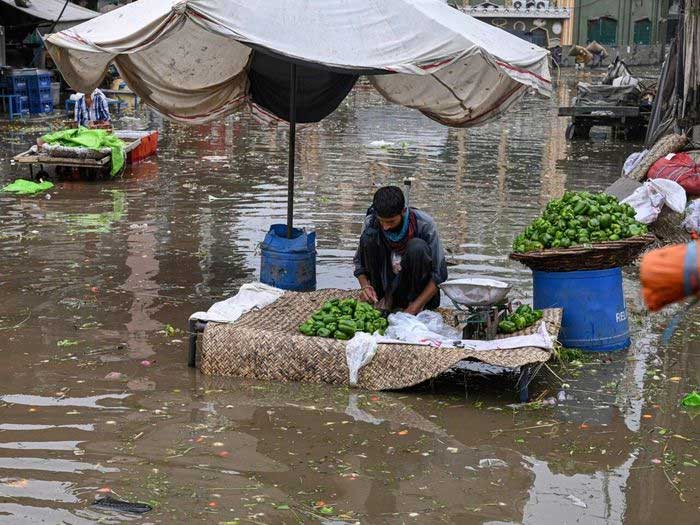According to Straitstimes, research published in the journal Nature indicates that for every 1°C increase in temperature, the frequency of heavy rainfall events increases by 15% at altitudes above 2,000 meters. Additionally, for every additional 1,000 meters in elevation, rainfall amounts increase by 1%.
In other words, a rise in Earth’s temperature of more than 3°C compared to pre-industrial levels could see the potential for catastrophic flooding events increase by nearly half.
The authors of the study emphasize the vulnerability of infrastructure that is not designed to withstand severe flooding events.

Extreme rainfall becoming more severe due to human-induced climate change.
The Earth’s surface has warmed by 1.2°C, which is enough to amplify record-breaking heavy rainfall that submerged vast areas of Pakistan last summer and parts of California, USA, earlier this year.
The planet is projected to warm by an additional 2.8°C by the end of this century, according to the Intergovernmental Panel on Climate Change (IPCC) scientific advisory board of the United Nations.
The new study, based on data from the past 70 years and climate model forecasts, identified two main drivers behind the increase in extreme rainfall phenomena at certain altitudes in a warming Earth.
Scientists have long understood that for every 1°C increase, atmospheric moisture increases by 7%.
Since the 1950s, heavy rainfall has become more frequent and intense in most parts of the world, according to the World Weather Attribution (WWA) organization.
According to WWA, extreme rainfall is becoming increasingly common and intense due to human-induced climate change in Europe, the central and eastern regions of North America, some areas of South America, Africa, and Australia.
The second factor identified by researchers is even more concerning. “This is the first time that researchers have considered whether these heavy rains fall as rain or snow. Unlike snowfall, rainfall triggers faster runoff, leading to a higher risk of flooding, landslides, and soil erosion,” stated lead author Mohammed Ombadi, a researcher at Lawrence Berkeley National Laboratory in California, in an interview with AFP.
According to the study, mountainous areas and adjacent floodplains are likely to experience the greatest impact from extreme rainfall events, particularly in and around the Himalayas and the Pacific region of North America. The research team recommends that the most affected areas prepare for an “extreme climate adaptation plan.”
Ombadi noted, “The increase in extreme rainfall needs to be considered when designing and constructing dams, highways, railways, and other infrastructure if we want to ensure they are sustainable under warmer climate conditions.”


















































